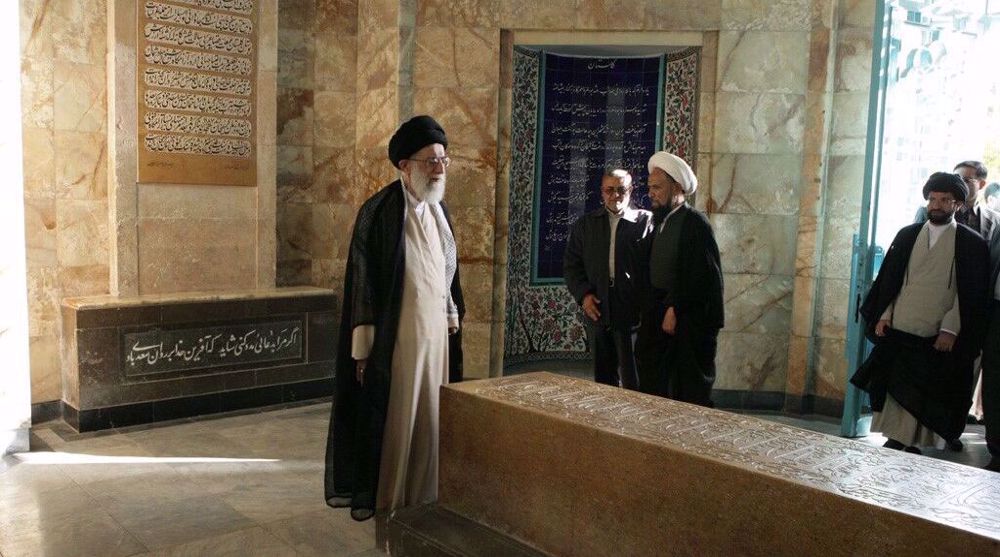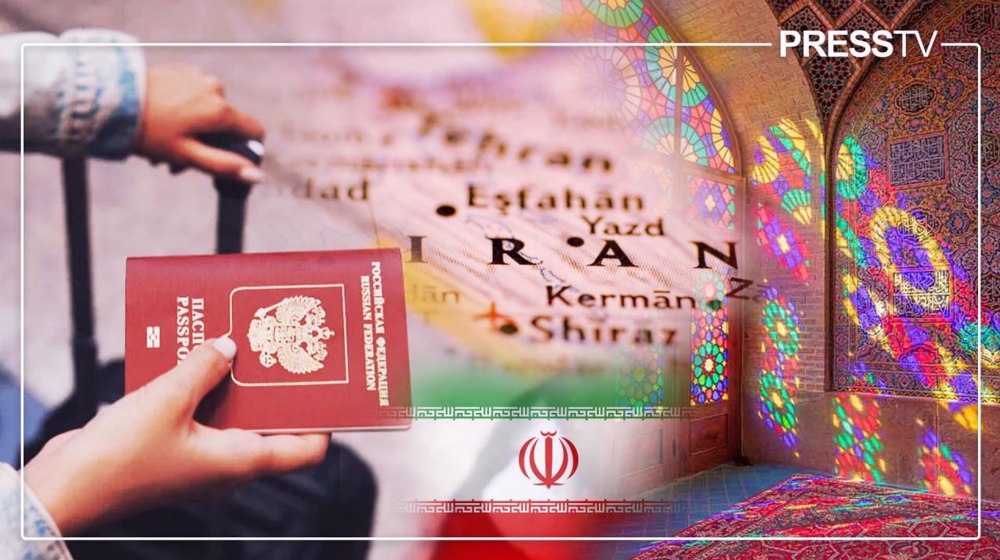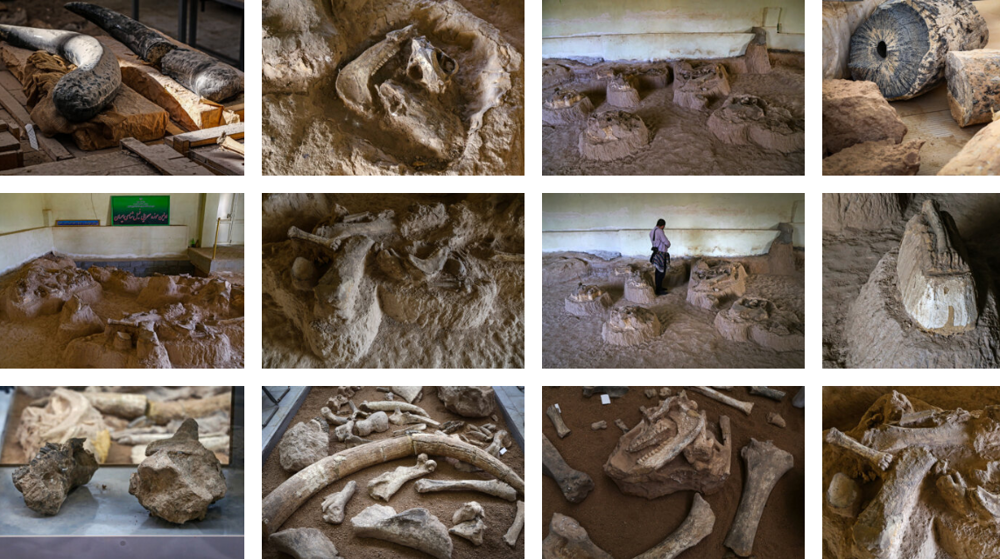Santur: A bright jewel in the crown of Persian music
Music in Iran dates back to ancient times based on the archaeological records of Elam, the oldest civilization in the southwestern parts of modern Iran. The historical land of Iran, also known as Persia, appears to be the birthplace of the earliest complex musical instruments dating back to the prehistoric times, according to the records.
Among those instruments is the santur, which was invented and developed in Iran and parts of Mesopotamia, or modern-day Iraq. It then traveled to the other parts of the world, with each country designing its own version to adapt to their musical scales and tunings.
The santur is today known as the most popular Iranian musical instrument. It is a direct ancestor of the piano and is referred to as the hammered dulcimer in English terminology.
The instrument is a trapezoid-shaped box often made of walnut wood. It has two rows of bridges and numerous strings and is played with a pair of slender hammer sticks (mezrabs).
Press TV has conducted an interview with Pezhman Bolourchi — a prominent Iranian musician and virtuoso on the santur — for more information about the ancient instrument and the classical Persian music in general.
Biography
Bolourchi started learning to play the instrument at the age of nine from Iranian maestros such as Parviz Meshkatian, Pashang Kamkar and Omid Sayareh. Bolourchi also had lessons in music composition with distinguished maestros Farhad Fakhreddini, the founder of Iran’s National Orchestra, and Vartan Sahakian. Additionally, he learned to play the daf from prominent musician Bijan Kamkar.
He spent 27 years teaching music at the country’s major music institutions and founded, in 2001, an institute of his own, Nahaleh Roudaki, which specializes in culture and arts, as well as Iran’s first-ever full digital recording studio.
As a musician, composer and producer, Bolourchi has had collaborations with a variety of orchestras and prominent Iranian singers, including Mohammad Reza Shajarian, Shahram Nazeri, Alireza Ghorbani, etc. He has arranged and released a range of albums and has also been the producer of concerts of famous classical and pop singers as well as music groups, including Shahram Nazeri, Ehsan Khaje Amiri, Mohsen Yeganeh, Rastak, Mohammad Esfehani, Khashayar Etemadi, Ali Lohrasbi, Alireza Ghorbani, Salar Aghili, Daal Band, etc.

Moreover, Bolourchi has served as the host of music shows on radio station Iran Seda and Shoma TV. He has over 220 music pieces in his artistic record. The musician has performed in more than 750 concerts and other events and is the license-owner of 35 music albums and the music pieces of two movies and an animated movie.
He has been awarded plaques of appreciation in various festivals — most notably Fajr — as the santur player as well as music composer and sound designer for movies. The musician has also received a letter of appreciation from the National Symphony Orchestra of Ukraine for live sound recording (using 110 microphones on the stage.)
Press TV: You have long been active in the field of classical music. What characteristics of the Iranian music made you develop an interest in it?
Bolourchi: As you already know, I started learning Iranian music at the age of seven with the encouragement of my father, who is himself a tar player. It would evoke a sense of tranquility in me whenever he played the tar. It was this feeling of peace that attracted me to Iranian musical instruments. Later on, I got to know the root cause of this feeling when I found out about the multi-dimensional nature of Iranian music, which means no musician can be successful in the sphere of music unless he/she has a good grasp of mysticism and literature.
To be more precise, I was the most touched and inspired by the classical music pieces recorded over the past 100 years. It is very enjoyable to listen to them because this type of music acquaints us with ways to express our feelings and opens the door to a new and tender world, where you can easily express yourself with no barriers and in a manner that is to the point. That is exactly the Iranian music’s point of strength and attraction both to professionals and all those who listen to this type of music.
Press TV: Your instrument of expertise is the santur. Could you tell us about this musical instrument and its status in Iranian music?
Bolourchi: The santur — which falls in the category of chordophones — is a trapezoid-shaped instrument with 72 strings and is played with two mezrabs (plectrums used for several Iranian and Indian string instruments). It is one of the most ancient musical instruments from the historical lands of Persia. The oldest trace of this instrument dates back to the era of Assyrians and Babylonians in approximately 559 B.C. It was one of the common musical instruments in the era of the Sassanid Empire and has been mentioned several times in the works of renowned Iranian philosophers and scientists Abu Ali Sina (Avicenna) and Abu Nasr Farabi (Alpharabius).
The instrument is said to have been made by Farabi and exported later to other countries such as Iraq, Turkey, Syria, Egypt, Pakistan, India, Tajikistan, China, Vietnam, Korea, Ukraine and other Central Asian states as well as Greece.
It has a quality resonance chamber, enabling the instrument to transfer the energy from the sound source (vibrating strings) into the air without any microphones.
In the first place, the large number of strings in the santur, besides the difficulty to tune the 72 strings, gives the instrument a special sort of euphonious sensitivity, which could help other instruments in the orchestra sound tuned as well. Secondly, the santur has a great sonority, giving the instrument a pivotal role in the orchestra. Thirdly, other instruments need to be in tune with the santur during an orchestra performance since it would be very difficult to tune the 72 strings simultaneously on the stage if the instrument is not well tuned, even to a very small extent.
The santur player has a central role in the orchestra, and that is why he/she is usually chosen as the leader.
Press TV: You have been a santur instructor for years. How commonplace has this instrument become among people, particularly the youth?
Bolourchi: The santur seems to be easier to play compared to other Iranian musical instruments given its high acoustic range as well as its capability to generate sound more effortlessly. The high acoustic range also creates enthusiasm in players, especially the young ones. Iranian instruments with such characteristics — such as the tar, the daf and the tombak besides the santur — are today more appealing to the young generation.

Press TV: Over the past years, a range of instruments have been created in Iran based on the shape of the traditional ones. Has there been an upgraded version of the santur?
Bolourchi: Naturally, different versions have been designed in recent years with upgrades to the resonance chambers and the diameter of the strings in an effort to improve the output sound. None of the changes have, however, been a success and that is, I believe, because not enough scientific research has been carried out in the field of acoustics. The santur is, of course, facing certain problems in terms of acoustics that need to be fixed.
Press TV: What do you, as a composer, believe is the basis for composition in Iranian music?
Bolourchi: It is, in general, based on Radif (a Persian word meaning “order”) and Dastgah (a musical modal system in traditional Persian art music). Secondly, Iranian music is very much lyric-centered and inspired by lyrics and poems. This means that any composer has his/her own interpretation of the lyrics, something that leads to the creation of a unique melody and expression of feelings.
Press TV: How committed are you to creativity in Iranian music?
Bolourchi: To answer the question, creativity should first be clearly defined. If it means a change in the form of orchestration in Iranian music, I am not a proponent of that. If we listen to the music pieces that have been passed to our generation with lots of ups and downs over the past several centuries, we realize that Iranian music has not seen any major change in form. It is the same genuine form that makes it sound attractive to both professionals and ordinary audience. I believe it would be improper for us to wittingly dispense with this genuineness.
Press TV: Improvisation is an important issue in our music. Tell us more about its meaning and the reasons why Iranian music is based on improvisation.
Bolourchi: Improvisation means creating something without planning and preparation in reaction to a specific situation. It happens when the musician offers a different interpretation of a single piece impromptu every time he/she plays it. In fact, musical improvisation means that a music piece will never be played in one form twice, either by a single player or by a separate band. In this case, extemporization turns into unpremeditated dialog between the members of the ensemble or between the audience and the singer and musicians.
Unfortunately, the mechanical mindset and efforts to structuralize the creation of works of art have today made it difficult for us to accept improvisation as a norm.

As I already mentioned, improvisation constitutes the highest level of musical understanding, which enables the singer or musician to express his/her feelings in the moment and off the cuff. If you take a look at the history of Iran, the country’s repressive governments of the past used to crack down on people to suppress criticism, prompting them to resort to the language of art to express their sentiments. This set the stage for improvisation in Iranian music.
Press TV: To what extent is Iranian music reflective of Iranian culture?
Bolourchi: Iranian music stems from Iranian culture 100 percent. For instance, the mournfulness of Iranian music is rooted in the pressure and suppression that people suffered under previous regimes. Ta’zieh — which is categorized as Condolence Theater inspired by the tragic death of Imam Hussein — is an example that is indicative of the oppression of Shia Muslims throughout history. In short, Iranian music reflects the country’s age-old culture and as well as its social and political ups and downs.
Press TV: You have had performances in other countries. How do non-Iranians view our music? And how far is the reach of Iranian music abroad?
Bolourchi: The melodious nature of Persian lyrics is important to the non-Iranian audience. Although they may not understand the meaning of a Persian song’s lyrics, they are attracted to its rhythm and the emotions hidden in the music.
In the course of the past decade, there has been a growing tendency from across the world towards oriental music, which has influenced Westerners with its depth of emotions and melody.
On the other hand, Iranian music is now very well-known abroad thanks to the presence and activities of the country’s cultural and artistic ambassadors beyond the borders.
Fortunately, Iranian musicians have achieved numerous successes on the world stage, securing a variety of international prizes, a factor that has helped the country’s classical music gain even more fame. Continued performances by me and other musicians in other countries will pave the way for a better understanding of this type of music. The pioneer of such efforts is maestro Mohmmad Reza Shajarian, who has been contributing to the universality of Iranian music for some three decades.
Columbia, Yale students bent on ending US support for Israeli genocide
VIDEO | Genocide in Gaza
Iran calls on BRICS to play role in stopping Israeli crimes
President Raeisi’s historic visit opens new chapter in Iran-Pakistan ties
Russia: Poland’s talks on hosting US nuclear weapons ‘dangerous’
India’s home minister vows to end Muslim reservation if his party wins
UN expert calls for arms, oil embargo against Israel
VIDEO | New World Order










 This makes it easy to access the Press TV website
This makes it easy to access the Press TV website